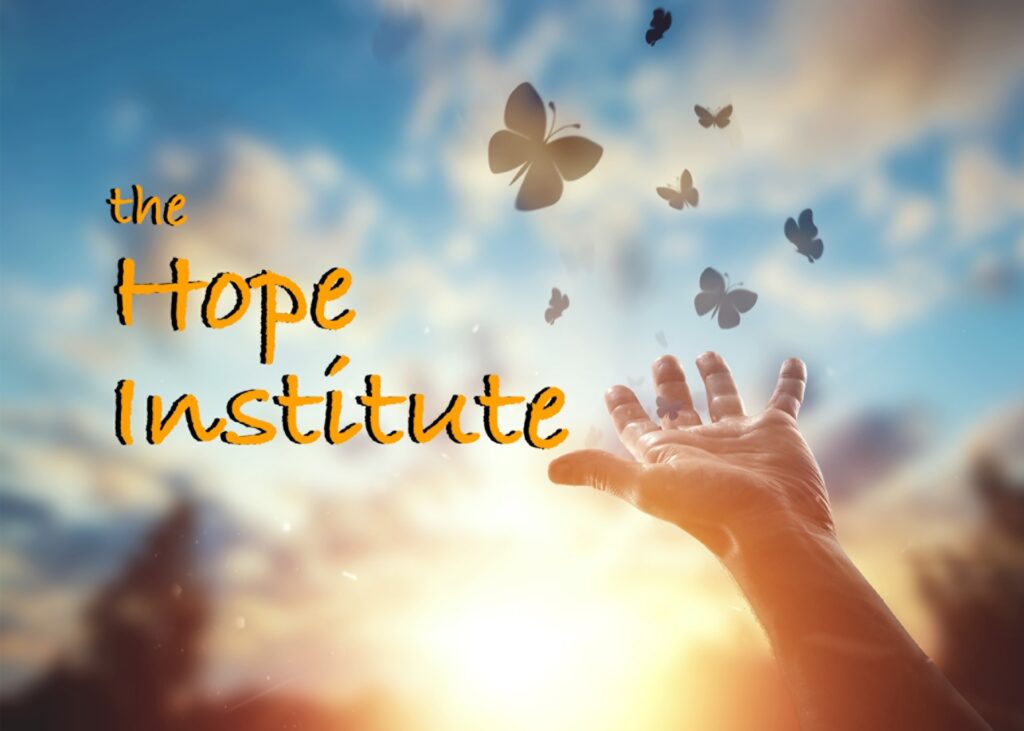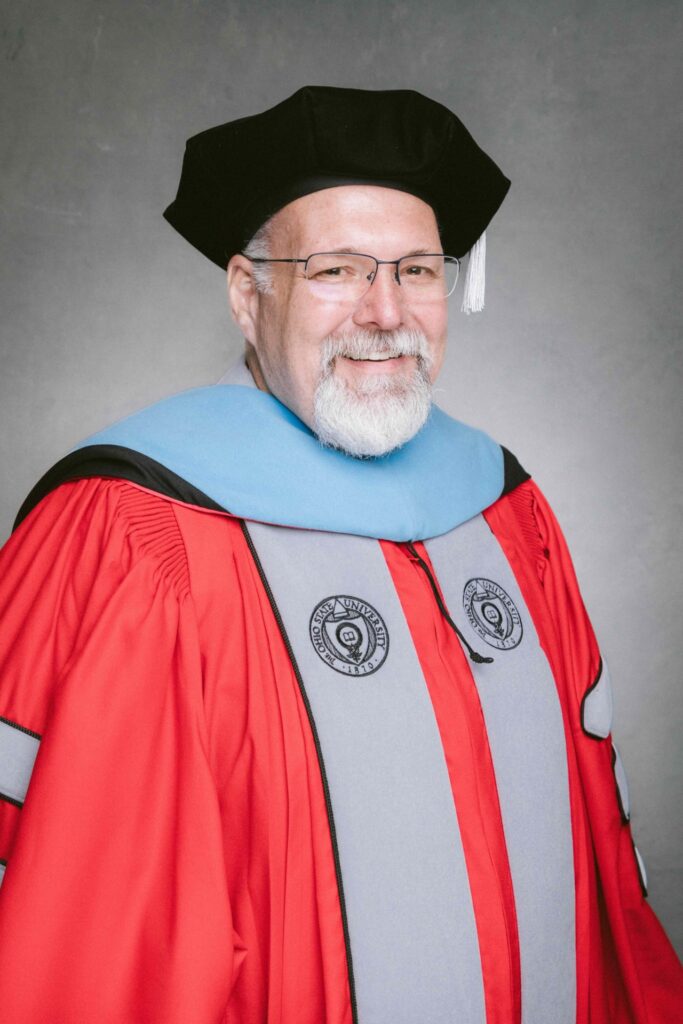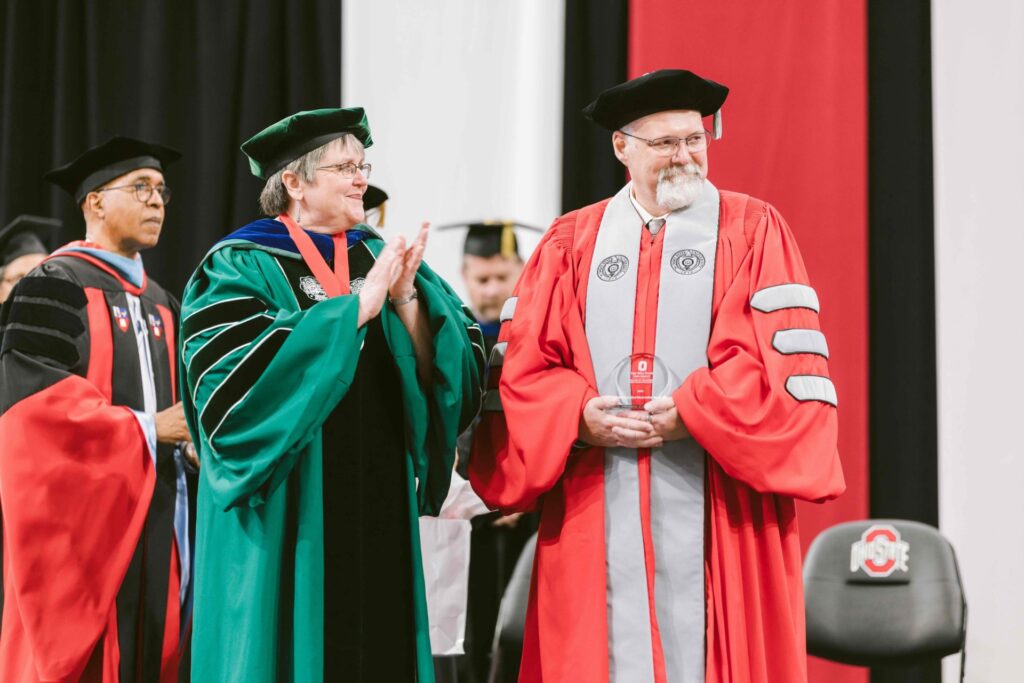Derek Lee didn’t set out to create a new counseling intervention model to help prevent suicide.
“I was just trying to figure out a way to save lives,” he said, “because there were people that were desperate.”
He chose to get a doctorate because he saw a disparity. “In our field, we’ve got a lot of people doing research, and we’ve got a lot of people doing clinical work,” he said. “But there’s not much crossover between them. I am a crossover.”
Lee, ’24 PhD counselor education, has worked with literally thousands of clients over 16 years. His experience allows him to humanize the research. He’s learned to ask questions differently, to look at issues in a more informed way.
The result: he created The Hope Institute of America in October 2021 in Perrysburg, Ohio. The new counseling model has proven so effective, he’s been asked to implement it in other states.

In a Georgia hospital that struggled with patients returning regularly with suicidal ideation, the model was utilized. After Lee implemented the Hope model, “They evaluated data from our program, and we were at 6% at 120 days,” he said.
These powerful results came from monitoring and analysis by the hospital, not by Lee.
Lee also has put the model to work in an Arizona public school district. He recently opened an office in Worthington, Ohio. And soon, he will bring its positive results to Boulder.
“Overall, I’m comfortable saying we consistently have a 95% success rate,” he said.
Suicide isn’t really about people seeking death. It’s about escaping pain. In the moment, dying seems like a better alternative to the stressors in their lives.
The true magic of what we do is provide hope. To help people see a spark that takes them beyond their situation to build a life worth living.
Derek Lee, ’24 PhD, Counselor Education
The ubiquitous Dr. Lee: Spreading out, helping more in need
Lee grew up near the reservation of the Saginaw Chippewa Indian Tribe close to Mount Pleasant, Michigan. He spent time there during late adolescence because his mother and her family are of Saginaw Chippewa heritage.
“I think I have a very different perspective because I walk through the world, blending in with white culture,” Lee said. “You hear things that people normally wouldn’t say (in front of a Native American). …” This helps Lee see the world and his diverse patients through a wider lens.
This broader viewpoint helped in his first job as a crisis counselor at Toledo’s Rescue Mental Health. He found he liked working with teens, and suicide intervention became his focus. However, Rescue, an in-patient center struggled with where to send clients after they were through the crisis.

Typically, community mental health centers were the logical destination, but they were often short on resources. “They weren’t necessarily able to provide the level of care that a lot of these kids needed,” Lee said.
So, Lee opened Perrysburg Counseling in 2010. Simultaneously, he continued to work for Rescue, finished a master’s at Bowling Green State University and saw youth as a therapist at a Bowling Green center.
He supported two local school districts in creating a mental health program and supervised graduate counseling students from a nearby university in their practicum experiences.
All the while, a new idea grew in his mind.
Focusing his expertise, founding The Hope Institute of America
The long-term therapy models they were using at Perrysburg were excellent, Lee said. So were the four proven models for addressing suicidality.
But he saw a gap. “The crisis models get people through the moment,” he said, “but if they have an underlying condition (like depression and anxiety), they are not treated.”
When those patients left inpatient care for long-term therapy, he said, if they had struggled with suicidality for a long time, if they became suicidal when highly stressed, therapy was derailed.
“I created a model that gets to them quickly and provides a level of treatment, so we’re actually addressing the suicidality. We’re not putting it on the back burner until the next episode.”
“We also see people within one day, and how often we see them is based on what they need, not on what we have available.”
A ghost on the shoulder leads to Lee’s crossover
With the new model underway, Lee and his colleagues spent time tweaking it to ensure it worked. In the meantime, he’d had two clients whose experiences pushed him to broaden his expertise.
With one individual, “I saw him go from a point of literally being hospitalized three to four times a year, involved in dangerous behaviors on a daily basis,” Lee said, “and within months, to being safe and no longer having to be hospitalized.”

The individual’s mom came to see him, Lee said, shedding tears of joy. For the first time, she didn’t have to worry about her child’s safety.
Elated, Lee wanted to replicate that success.
But he’d also lost a client to suicide, one he’d thought was ready to be released from therapy. “A piece of that is like a ghost on your shoulder,” he said. “You never stop asking, ‘What could I have done differently?’”
“That was a big part of why I wanted to get into the research side of (counseling),” he said.
He was ready to be the crossover.
Why Ohio State for counselor education?
“I had looked up to and gotten a lot of help from Paul (Granello) and Darcy (Haag Granello) over the years as suicidologists,” Lee said. “They did a couple of trainings for our organization, and I would go to them for guidance on different issues.”
The two professors had created far-reaching suicide prevention programs for school-age students in Ohio, among other projects. Haag Granello initially developed Ohio State’s Suicide Prevention Program.
“I am really standing on the shoulders of people like Paul and Darcy,” Lee said. “I wouldn’t be where I am without their building the very foundation that we continue to build up. … We’re not winging it.”
“Unfortunately, many counselors don’t have access to knowledgeable people like we do.”

With guidance from Haag Granello, his advisor, Lee used his dissertation to study and document the effectiveness of his Hope model with 58 clients.
“My research isn’t just for a publication,” he said. “It’s to learn new things and take that directly into the clinic.”
For his work, Lee received the Department of Educational Studies Dissertation of the Year Award last spring.
It is rare that a dissertation has such practical and immediate utility. I (and others) believe that the model he has created … will revolutionize suicide intervention across the U.S.
wrote Darcy Haag Granello in her award nomination
Professor of counselor education and Lee’s dissertation advisor
At Haag Granello’s recommendation, Lee also entered the college’s Biomedical Education Program. It prepares medical and health care professionals to teach.
Being in classes with practicing MDs helped him understand how they view patients and their treatment, he said. It also helps him navigate hospital systems and integrate the two worlds of medical and behavioral health.
What’s next? Advice for future alumni
Lee aims to expand the Hope Institute model nationally, but they’re keeping it proprietary for now.
“We might license others to use it,” he said, “but we’ll do the training, the supervision and provide the support to maintain quality and ensure outcomes.”
Lee sees mental health professionals as “tasked to obtain rock star outcomes on a college student budget. We have to adapt and figure out how to survive in that environment,” he said.
Lee advises future students and alumni to “follow your heart and do the work you love. Find mentors who both nurture you and challenge you.”
“Darcy challenged me all the time. When I came up with an idea of something I wanted to do, she would ask, ‘Why? Where’s the research?’ She constantly pushed me, and it absolutely made me better.”
“You need to maintain contact with people who will steer you straight.”

